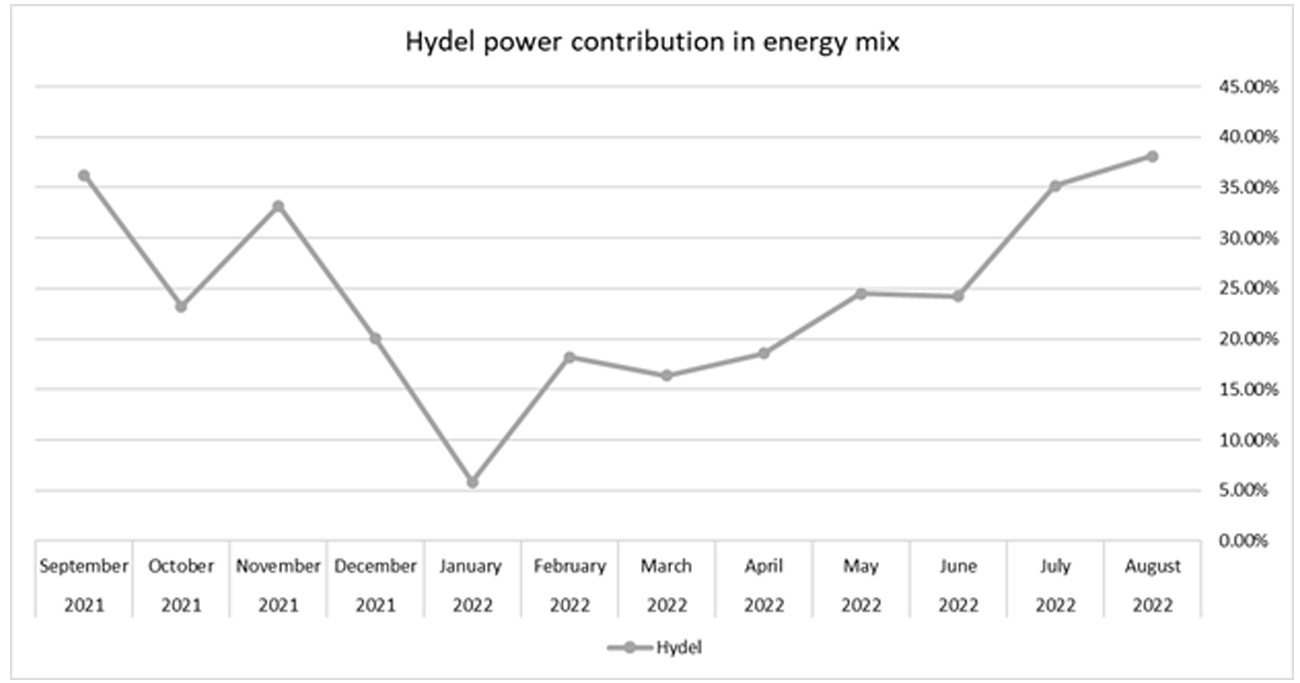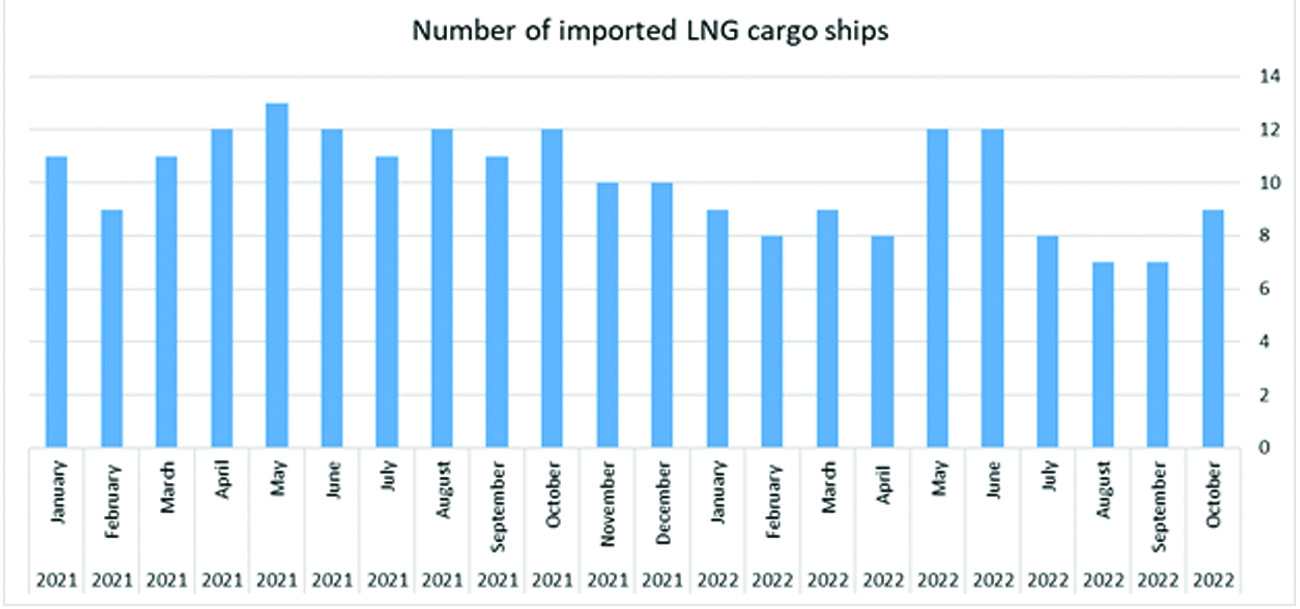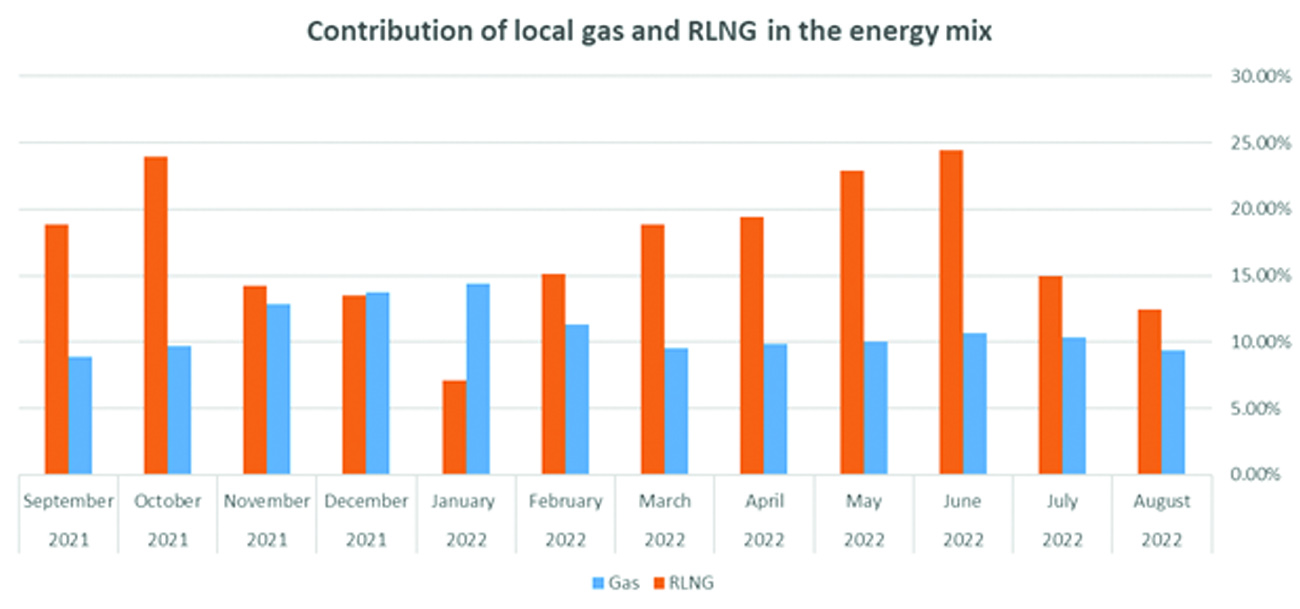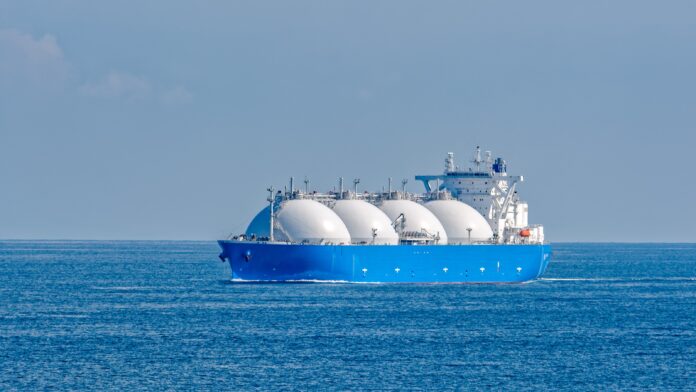If you thought previous winter gas woes were bad in Pakistan, this year could make you reconsider what ‘bad’ really means.
If that sounds dramatic, it’s because it is meant to be.
The country’s annual winter gas shortages are all set to be exacerbated with the global economy still in the vice-like grip of an energy crisis emanating from the Russia-Ukraine war. Although Pakistan has two reliable long term deals in place with Qatar for the supply of Regasified Liquified Natural Gas (RLNG), it won’t be enough to cover spiking demand by a longshot, according to most local projections.
In the past, Pakistan has had to supplement the long term RLNG supplies by tapping the spot market for additional cargoes. However, the spot market is in chaos at the moment given the extremely high rates being demanded in the face of a global shortage – particularly in energy-hungry and rich Europe, which usually bought from Russia.
Globally the biggest producers of oil and gas have been sanctioned by the US namely, Venezuela, Iran and, more recently, Russia, for its invasion of Ukraine, which has led to a yawning gap between demand and supply.

With the Russia supply down to 20% of the levels it was at this point last year, according to the International Monetary Fund’s latest World Economic Outlook report, the larger Western economies are likely to eat into supply sources of the rest of the world, and will be willing to pay a lot more for it. And that’s bad news for economies such as Pakistan, which has already been unable to buy affordable LNG on the international market. It will get tougher still in coming months with developing countries using their financial muscle to make it to the front of a very long line come this winter.
Winter is coming
The demand for gas generally rises during winter where it is used for both energy as well as heating across the world. The situation is the same in Pakistan, where the challenge is two fold: one, gas is used for heating across the country; two, gas becomes a bigger source of electricity generation with hydel coming all the way down due to lack of rains and the freezing conditions up north affecting river flows (and hence electricity production at the dams).
Pakistan has its least precipitation during the winter months from December to February. During this period, hydel production dips leading to a greater reliance on thermal power plants. In the current scenario electricity coming from fuel oil, high speed diesel, coal and gas would have to pick up the slack.
Looking at LNG import data from the Oil and Gas Regulatory Authority (OGRA), the number of cargoes Pakistan has been able to procure is already on a downward trend.
Now factor in Pakistan’s current financial situation. Though gas may be available in the market, the price will be high enough to completely drain the foreign exchange reserves of Pakistan which are currently at a three year low, standing at around $7.5 billion according to the central bank, and falling fast. This barely covers a month’s worth of the country’s import needs, according to most analyses.
No money and a market full of rich buyers. Not looking pretty for the country at the moment. But to stress just how bad the situation is, let’s dive into some basic numbers about Pakistan and its dependence on gas.
Gas bina dil mera nahi lagda…
LNG is an absolutely indispensable part of Pakistan’s overall energy mix. If you were to look at the figures provided by NEPRA, on average, RLNG has accounted for 17.16% in our energy mix over the course of the past year.
According to the numbers published in the Economic Survey for 2021-2022, the installed capacity of RLNG has contributed 23.8% from July 2021 to April 2022.
Some more numbers: About 373 million MMBTU of RLNG, worth about $3.4 billion, was imported in FY2021 according to the Economic Survey. Imported gas accounts for about 30% of the nation’s total gas consumption. And with Pakistan’s local gas supplies – which are exponentially cheaper – running out at a fast pace, reliance on imported LNG is only rising every year as highlighted in the economic survey of the current year as well.

On the supply side, a simple comparison of the cargoes imported this year versus the last year shows a somewhat grim outlook. In September 2022 Pakistan was able to procure nine cargoes, while for the same period last year we had 12 cargoes. Three cargoes may not sound much, but it is 300mmcfd (million cubic feet per day). That’s a lot of gas to make up for.
Pakistan has multiple long-term supply deals, but the two signed with Qatar are the ones which can be said to be the only reliable ones these days. That said, no one can be sure if Qatar would fulfil its obligations to Pakistan based on the fact that they are getting a more profitable deal from European countries like Germany.
In February 2016, Pakistan and Qatar signed a 15-year LNG agreement at a price of 13.37% of Brent with a reopening provision after 11 years. Then, on February 26, 2021, it agreed to a 10-year LNG contract with Qatar at a price of 10.2% of Brent with a five-year reopening provision. Currently, Pakistan receives six cargoes per month from Qatar under the first deal and two under the second deal.
One long term deal is with the Italian company ENI for around one cargo per month at a price of 12.14% of Brent. At the Pakistan Gas Port Consortium Limited facility moored at Karachi’s Port Qasim, ENI is required to provide 180 cargoes in total over a period of 15 years to the Pakistan LNG Limited (PLL), which acts as the government’s buyer in the international market. Additionally, PLL and GUNVOR had agreed to a five-year contract in 2017 at a price of 11.62% of Brent, which expired last year.
The problem with the two non-Qatar deals is that both ENI and GUNVOR have reneged on their supply commitments – particularly during last winter which significantly disrupted the energy sector and other industries like textiles as well. The two invoked the ‘force majeure’ clause to cancel shipments, saying global conditions meant they were unable to procure the necessary LNG from the market. They say it’s not their fault, and shrug and pay a fine. Yes, they have to pay Pakistan a significant penalty, but that penalty is not much compared to the cost of gas and the effect of the non-supply on Pakistan. And most observers believe the higher prices they can get from more developed countries means they can more than make up the penalty amount.
A long winter
The worst part of all of this is that there’s no end in sight to the crisis. In fact, on the face of things, it seems things will only get worse.
“The geopolitical re-alignment of energy supplies in the wake of Russia’s war against Ukraine is broad and permanent. Winter 2022 will be challengin g for Europe, but winter 2023 will likely be worse. Fiscal authorities in the region need to plan and coordinate accordingly. The “price signals are essential to help curb demand and stimulate supply,” read the forward to the IMF’s World Economic Outlook report released days ago.
g for Europe, but winter 2023 will likely be worse. Fiscal authorities in the region need to plan and coordinate accordingly. The “price signals are essential to help curb demand and stimulate supply,” read the forward to the IMF’s World Economic Outlook report released days ago.
Basically that means the richer countries of the world may be singing “Peechay Hutt” to poorer economies like Pakistan for the foreseeable future in the global energy market. Because they will charge more, to curb demand, so they can effectively pay more. And even if they don’t charge more, they can afford to subsidise if needed.
Pakistan, on its part, is trying to increase the role of domestic coal being excavated from Thar along with an ambitious plan to add 10,000MW of solar energy by the summer of 2023 according to the Prime Minister Shehbaz Sharif. Furthermore, the government has announced that there will be massive gas load shedding as well, during which the plan is to provide two to three hours of stable gas during meal times, that is breakfast, lunch and dinner.
However, according to Samiullah Tariq head of research at Pakistan Kuwait Investment company in a TV interview he said that, even though the government has promised stable supply three times a day it would still be very difficult to manage the very limited resources.
The current government has also shown interest in working on the Iran-Pakistan gas pipeline project which has the potential to be a game changer if it goes through. The pipeline has been in the works for a while, the Iranian side of the pipeline is complete up to our border in Balochistan, however due to sanctions on Iran and international pressure, Pakistan has yet to start work on its side.
It would also need to create awareness and provide viable solutions for the masses as well as encourage conservation to reduce the impending suffering in the winter. The government needs to emphasise the fact that the upcoming winter will be difficult with regards to gas supplies to the public.
And this is not too difficult either, the Oil Companies Advisory Council had conducted a similar campaign to promote carpooling and rationing measures that the people should take to reduce the overall imports of oil and petroleum products. At the time the government was also struggling with the balance of payments.
A similar campaign being conducted by the government or PLL can possibly go a long way in creating awareness, as well as keeping the masses informed regarding the overall situation.
Consumers in Pakistan
The government will do what the government will do. But citizens will need to brace and take effective steps to mitigate their hardships.
If you’re a person that lives in an extremely cold area and likes to stay warm, an alternative to gas heaters would be electric heaters. Although possibly there will be a shortfall in the electricity supply as well, yet the electric heaters would be a more viable solution as compared to a gas based heater.
Similarly, it might be time to consider electric stoves as well given the dismal gas situation. Most of us currently use gas stoves and too often during winter they either don’t work at all or there’s a very low flame which isn’t suitable for cooking. Lots of people, even in the poshest areas of the country, are using gas canisters. But these are dangerous and availability and pricing will still be a problem. Yes, electric stoves would need significant expenditure – but the net effect, financially and in terms of convenience, may just be positive.
Perhaps, the government can launch schemes for electric stoves and heaters. Incentivise local production. Of course this is an option if the government can keep the lights on with power production cuts.
Additionally another key issue is heating water especially in the early morning and evening hours of the day. For this there are two possible solutions: the green solution, which is solar water geysers, or electric water geysers. The former would be more expensive, but the latter would mean inflated electricity bills even in the winter months that are meant to provide a respite in this department. .
The measures mentioned above seem “half” measures at best, regardless the coming winter is going to be challenging for us as individuals as well for the whole economy.


























Fabulous Your Blog & All Post I see Your All Posts
I once again find myself personally spending way too much time both reading and leaving comments
사설 카지노
j9korea.com